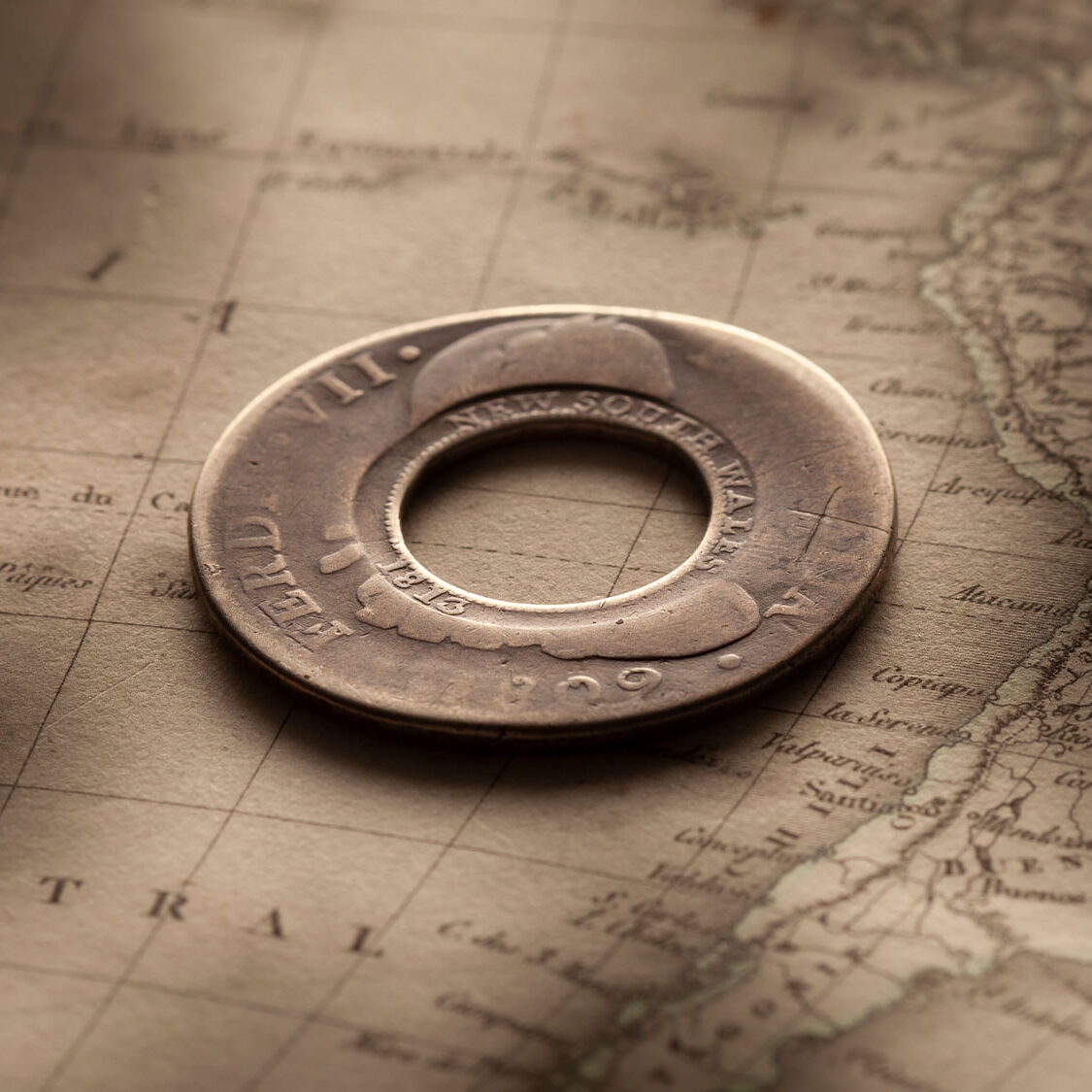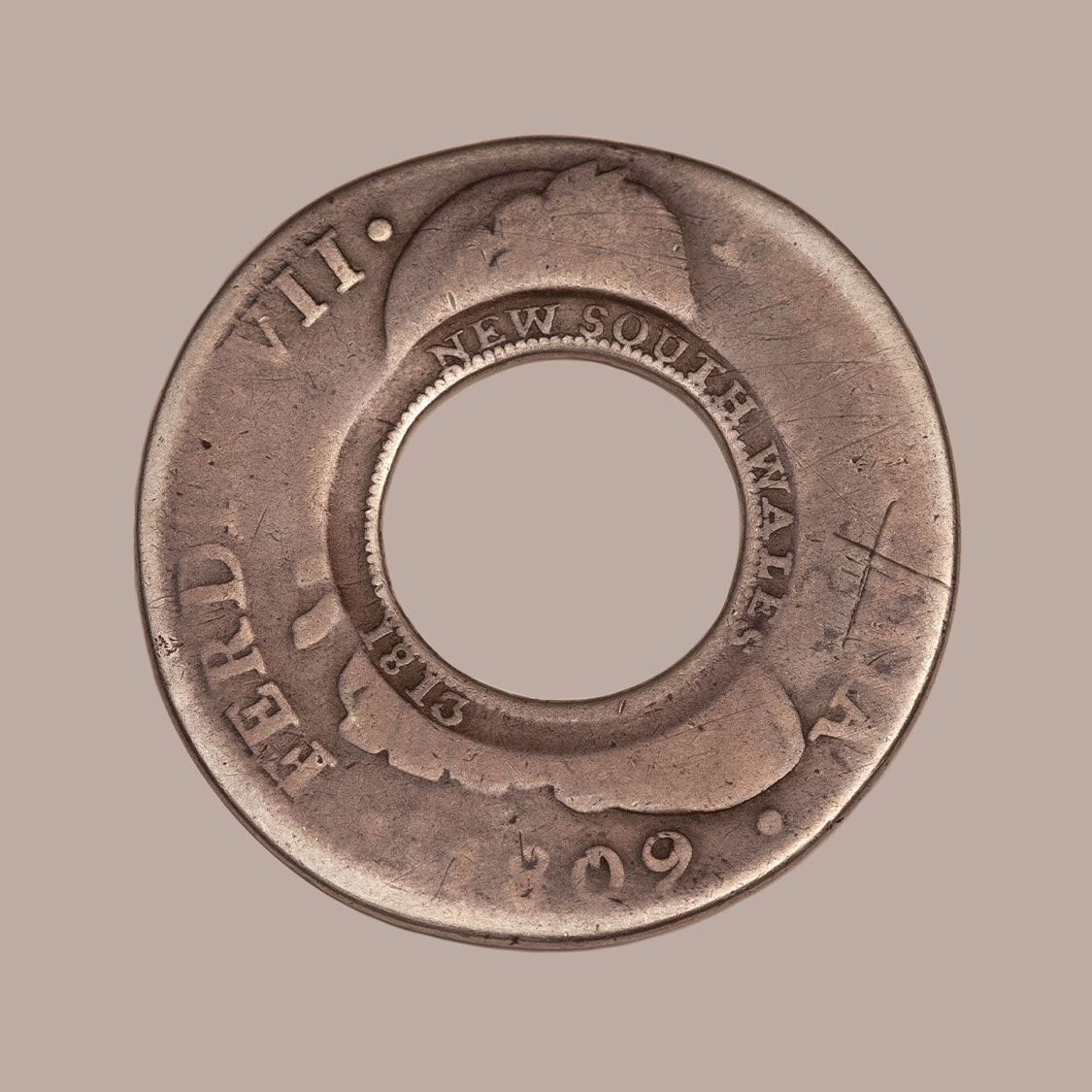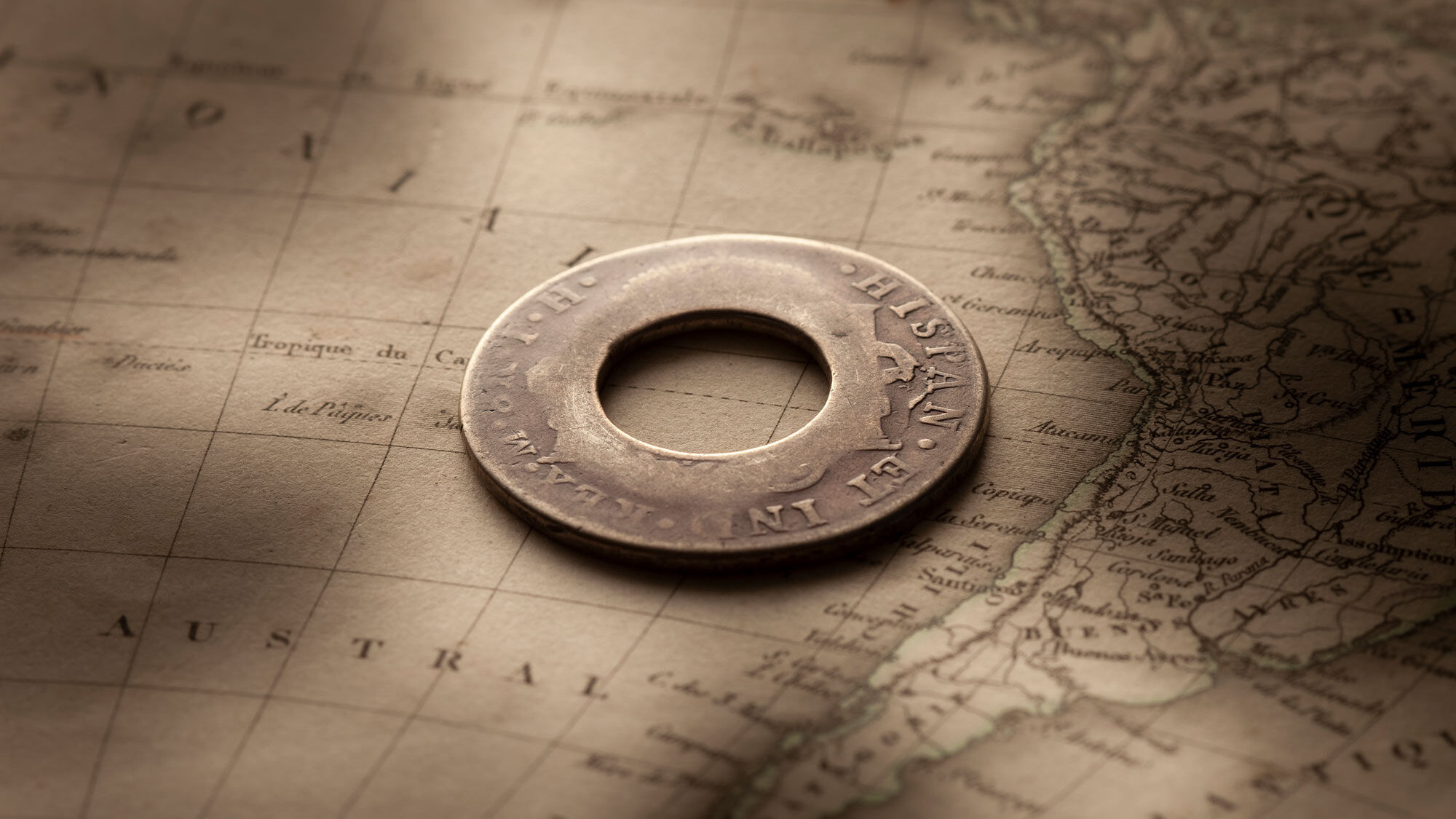1813 Holey Dollar created from an 1809 Ferdinand VII Spanish Silver Dollar


The fundamentals of this Holey Dollar.
When William Henshall created this Holey Dollar, he grabbed a Spanish Silver Dollar that had been struck in 1809 at the Mexico Mint and that depicted the legend and portrait of King Ferdinand VII of Spain.
Had Henshall been an avid historian he might have realised that Joseph Bonaparte was King of Spain in 1809. Ferdinand was definitely NOT the reigning monarch. He had been duped by Napoleon Bonaparte into relinquishing the throne!
So, the dollar he was about to deface, had an extreme historical peculiarity and rarity that might have made it worth holding onto.
Alas, Henshall was our first mint master and was committed to the task of creating the nation's first coins. Using crude equipment, he cut a hole in the dollar, one of 40,000 coins that he would eventually deface in his quest to create the nation's first coins.
Henshall then continued the minting process by over-stamping the inner circular edge of the hole with the words New South Wales, the date '1813' and the value of five shillings.
And it is at this point - the over-stamping involving the application of the date, value and issuing authority - that the holed silver dollar became the 1813 New South Wales Five Shillings. Better known as the 1813 Holey Dollar.

The coin is extremely pleasing to the eye and has toned to a handsome charcoal grey with glossy fields. A graffiti mark is noted. The counter stamps are clear and visually well placed.

The reverse reflects much usage but again is visually attractive, the fields a handsome charcoal grey and glossy. This coin has been priced to engage the collector that wants an affordable Holey Dollar.
A Holey Dollar that is defined by the monarch Ferdinand VII.
Lachlan Macquarie's shipment of 40,000 Spanish Silver dollars was not specific, so any date would do. And any monarch would suffice, Charles III, Charles IV, Ferdinand VI or Ferdinand VII.
And herein lies the key! For some monarchs appear more frequently than others.
Holey Dollars featuring the portrait of Charles IV are the most readily available, followed by Charles III, and Ferdinand VII. A Ferdinand VI Holey Dollar does exist but it is unique and is definitely not for sale.
So the rarest monarch from a collector's perspective is Ferdinand VII with only thirteen Holey Dollars available to private collectors.
A Holey Dollar with a Bonaparte connection.
Napoleon Bonaparte emerged as the strongman of Europe in 1799 leading his armies across Europe deposing monarchs and dominating the entire continent. At the time Spain was ruled by King Charles IV and Spain was an ally of France.
In 1807, Bonaparte’s armies marched through Spain and invaded Portugal.
The alliance between France under Bonaparte and Spain under Charles IV disintegrated the following year when on February 16, 1808, under the pretext of sending reinforcements to the French army occupying Portugal, the French invaded northern Spain.
King Charles IV was pressured into abdicating the Spanish throne in March 1808 to his son Ferdinand VII. The son reigned for less than two months.
Both Charles IV and Ferdinand VII were duped by Napoleon Bonaparte into ceding the Spanish throne to Bonaparte’s older brother Joseph who assumed rule of the Spanish kingdom on 6 June 1808.
And while the upper echelons of the Spanish Government accepted Ferdinand's abdication and Napoleon's choice of Joseph as King of Spain, the Spanish people did not. Uprisings broke out throughout the country.
The Mexico Mint refused to acknowledge Bonaparte as the Spanish King and protested by continuing to strike their silver dollars with the legend and portrait of the exiled Ferdinand VII. It’s politics 101. Played out in the nineteenth century.
By 1813 the French position in Spain became untenable and Napoleon withdrew his troops and released Ferdinand VII from Valencay, France, where he had been imprisoned. Ferdinand VII returned triumphantly to Madrid and re-claimed the Spanish crown early in 1814.
© Copyright: Coinworks
